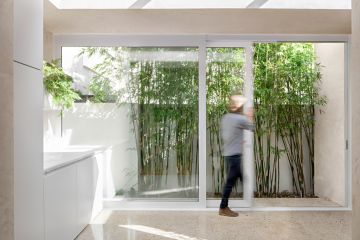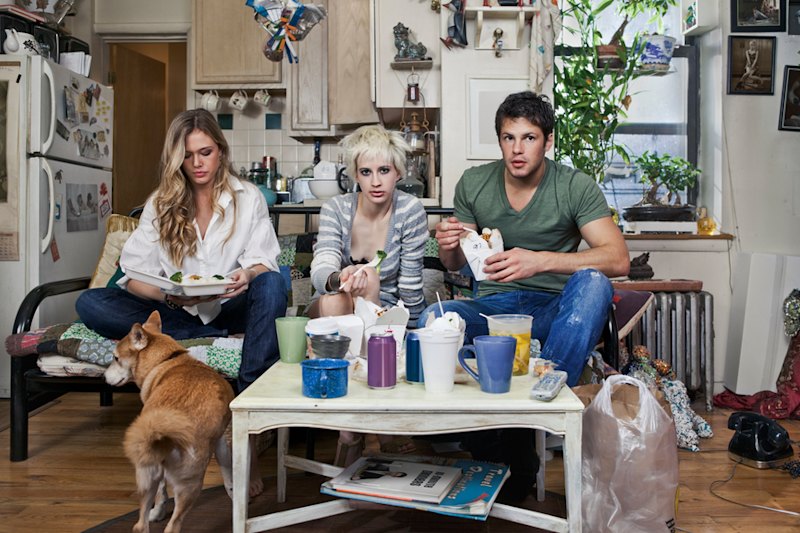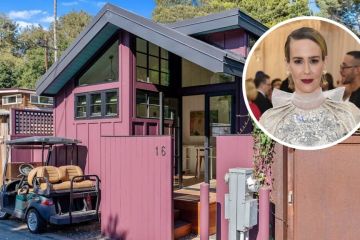Is the property market to blame for our commitment to bland interiors?

Last month, Gwyneth Paltrow’s newsletter GOOP contained one of those rare celebrity gems: a “tour” of the Oscar winner’s New York apartment. Paltrow, who was selling the place, revealed to readers she was the proud owner of an indoor family swing. But apart from that one quirky piece, and the location (Tribeca), there was sadly nothing else in her home that would lead anyone to believe a celebrity lived there, much less someone known for taking as many sartorial risks as Paltrow. This is the woman who thinks nothing of showing half her naked bottom on the red carpet, or wearing short shorts to a movie premiere. Yet her home was incredibly bland. Described as a “pale, floating cloud” the place contained no real colour; white walls, grey sofas, cream chairs and an ivory kitchen. Designed by Roman and Williams buildings, the company that normally does hotel suites – the most banal of all interiors – it could belong to anyone. Well, anyone rich enough to afford the materials.

Gwyneth Paltrow’s New York apartment. Photo: Goop
The concept of a pared-down palette is, of course, nothing new. It’s what most of us have been doing since the 1990s; layering white on stone, on bone on paper, with some tasteful dark wood here and there – perhaps a sideboard. Perhaps a scatter of brightly coloured cushions on our slate-coloured sofa. We might dare to breakout with an over-sized photograph of a beach. Or maybe a painting of wheat. We’ll go a little crazy in the kid’s rooms – a rainbow lamp! A wall decal! But let’s keep the walls cream, yeah? If we need to brighten up the place, we’ll bring in another mirror.
The reasons have as much to do with our personal budgets as our taste.
“At the end of the day bland colours are safe, there’s far less risk of regret,” says Sydney stylist and art director, Eliza Iredale.
The reason, according to Iredale, is related to our property market as much anything else. With the proportion of Australians renting now edging up over 30 per cent, keeping your home neutral is sometimes not a choice. Then there’s the fact that over 1.5 million Australians now own a second property they don’t live in, sometimes even three or four.
“On The Block a few years ago I thought it was kind of amazing that every finished house was painted almost the same shade of taupe grey.
“[But] it’s become kind of a clean slate where real estate is concerned, nobody wants to offend the potential future owners.
“If you look at the cars on the street they’re almost entirely silver or white, [because] committing to a bright colour is just far more of a statement than most people are prepared to make.”

George Clooney’s Cabo, Mexico home. Photo: Architectural Digest
While it’s true that few of us have the resources or courage to commit to a Baz Luhrmann level of interior decorating, with blood red walls and brightly wall papered rooms, it’s interesting that far from being the “default” decision, for celebrities like Paltrow, it’s now considered aspirational.
“Scandinavian design has had a huge influence on interiors and that translates into a clean, neutral palette,” says Iredale. “Social media has also made people far more conscious of what others think – they want to be able to Instagram their feet in white linen sheets!
“And that desire for group approval probably translates into less risk where colours are concerned.
They’re filling Pinterest boards with sleek, Swedish kitchens and stark warehouse apartments.”
It wasn’t always so. According to trend forecaster, James Wallman, the 20th century was defined by materialistic consumerism. Wallman writes in Time Magazine that, “our standard of living soared, and we got modern appliances, central heating, bigger and better cars”. But as these appliances became common place, (think: a TV in every room) the trend swung back, and it soon became a status symbol in and of itself to minimise furniture and drain the colour from every room. And, like any other trend, the more of it you see, the more your eye adjusts, the more jarring anything out of the bland range appears.
“[Neutrals] have really become the default no-brainer decision, like a uniform” says Iredale.” I don’t think it’ll change any time soon.”

Julianne Moore’s previous Montauk cottage. Photo: Town and Country Hamptons
We recommend
We thought you might like
States
Capital Cities
Capital Cities - Rentals
Popular Areas
Allhomes
More







